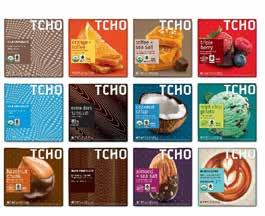




Last month, San Francisco parents submitted their school choice lists. If demand during the 2017 academic year is any indication, Lowell High School, A.P. Giannini Middle School and Clarendon Elementary School will be the most popular requests at their respective levels.
San Francisco parents submit as many choices as they want into the school lottery system – for the 2017 academic year, 53 parents ranked their preferences for all 70 elementary schools – in order of preference, as children reach pre-kindergarten, elementary, middle school and high school levels, or if they want to transfer
schools. The task of choosing the right school, and getting admitted to it, can be arduous. San Francisco Unified School District (SFUSD) literature states that the student assignment system “creates tensions” in balancing parents’ desire to receive a select assignment with the need to “create a robust enrollment for all schools.”
According to Rachel Nip, program director for Parents for Public Schools, a nonprofit that assists families through the enrollment process, a multitude of factors make schools more or less appealing to applicants, including location, language programs, whether a sibling attends and student body size.
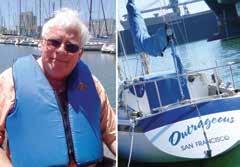 BY JESSICA ZIMMER
BY JESSICA ZIMMER
Longtime Dogpatch resident and community advocate, Joe Boss, died at his home from health complications on December 19, 2017. He was 72.
Boss was known for his insistent engagement in Southside issues and organizations, as well as his work as a consultant for developers. He was a member of the Central Waterfront Port Advisory Group, San Francisco Port
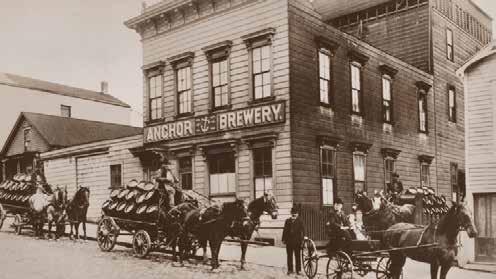 BY MICHAEL IACUESSA
BY MICHAEL IACUESSA
Five months into the purchase of Anchor Brewing Company by Japanese beer giant Sapporo, Anchor president Matt Davenport has promised that the company will continue to be San Francisco’s largest manufacturing employer – currently with 124 staff members – with all of its beer brewed on Potrero Hill.
“Sapporo is committed to preserving and maintaining Anchor’s operations in San Francisco, including the historic Potrero Hill brewery,” Davenport wrote in an email to the View. He added that Sapporo will be investing in production improvements at the Mariposa Street facility, where Anchor has been located since 1979. It’ll also be upgrading the brewery tour program and De Haro Street taproom. “Sapporo Holdings envisions Anchor as
a beacon of San Francisco culture, and as such plans to invest in the physical facility to help reinforce the historic nature of the brewery as part of the SF landscape,” Davenport added.
Previous company statements indicate that the brewery, which produced 135,000 barrels in 2016, has been running at less than 60 percent capacity, and that Sapporo will be purchasing automated equipment to improve its bottling efficiency.
from the previous year. Real estate was a factor in the deal, however, with Anchor owning the property on which its brewery and adjacent tap room reside. Anchor Distilling, which produces spirits such as Junipero Gin and Old Potrero whiskey, isn’t involved in the deal and will become an independent company.
Anchor Brewing, which was founded in the City in 1896, has long dubbed itself as the country’s oldest craft brewer. Anchor is ranked as the 22nd largest domestic craft brewing company, according to the Brewers Association, an industry trade organization.

Last August, Sapporo paid $85 million to acquire a 100 percent equity interest in the firm, which is best known for its Anchor Steam lager.
In 2016, Anchor’s sales totaled approximately $33 million, a four percent drop
It’s unlikely that the Brewers Association will continue to consider Anchor a craft brewer, however, as it defines this category as “small, independent and traditional.” The trend of small brewers being bought out by global conglomerates has been a sore spot for craft brewing advocates, who in the last few years have seen Heineken purchase Petaluma-based Lagunitas, Constellation Brands acquiring San Diego’s Ballast Point, and Anheuser-Busch InBev swallowing 10 craft brewers this decade.
“Since 2011, especially, we’ve seen big beer buying up small and independent brewers in a way we never
Advisory Group, the Eastern Neighborhood Citizens Advisory Committee, and the Potrero Boosters’ executive committee. He, along with his wife, Janet Carpinelli, helped create the Dogpatch Historic District.
For more than 30 years, Boss consistently attended meetings focusing on land use, including the University of California, San Francisco’s recent public gatherings regarding the construction of student housing. He was well-known for his years-long efforts to transform Esprit’s private lot at 19th Street and Minnesota Street into a public park. And he helped elect District 10 Supervisor Sophie Maxwell in 2000.
Boss was the son of Marie and the late Louis Boss, and the brother of Judy, Nicki, and the late Mike Boss. Boss attended the College of Marin in the early-1960s. He married at the age of 20, and shortly thereafter had two children. For the next 20 years, he worked for the Reneson Hotel Group, which managed Best Western hotels in Marin and San Francisco counties.
Boss started out with the group as a maintenance engineer. According to Carpinelli, he was “very good at anything mechanical or electrical.” Boss eventually became the company’s chief executive officer. In the late-1990s and early-2000s, Boss worked as a strategist, developer, and consultant for a large golf course in Calaveras County, as well as for development projects in Danville and other parts of the San Francisco Bay Area.
Boss and Carpinelli bought a house on the 900 block of Minnesota Street, “pre-Dogpatch,” in 1983. “It was a completely original house. We worked on it and did all the electrical, plumbing, and carpentry. Since we loved our house and our neighborhood, we put a lot of work into the property,” said Carpinelli.
The couple also owned a sailboat, “The Outrageous,” that “passed through the ownership of many friends through the years until we berthed it at South Beach Harbor,” according to Carpinelli. John deCastro, a longtime Potrero Boosters member, became a partner in the boat for several years.
“Joe was one of the founding members of the South Beach Yacht Club. In the 1980s, he helped build the original clubhouse and deck. When the San Francisco Giants came to the area, Joe was instrumental in making sure the owners could have easy access to the harbor parking lot at any time,” said Carpinelli.
“Ugh, I don’t want to go there!” my 16-year-old daughter, Sara, exclaimed. “It’s so boring!”
We were on one of our frequent meandering drives in and around San Francisco, a favorite Sara activity. She loves to wheel around freshly found neighborhoods, especially those with long, lovely, boulevards: Lincoln, Folsom, Twin Peaks. While I enjoy these rides as well, especially on a temperate day tucked into our aging convertible Mini Cooper, I’m task-oriented. In this case, I wanted to make a deposit at Chase Bank.
“All they do is handle money,” Sara pressed her case. “Even the people who work there are bored.”
As with love, there are multiple shades of boredom, none adequately captured in a single word. There’s the tedium of waiting for an appointment with a doctor or dentist, leafing through the worn celebrity magazine in which the ripped-out page is exactly the one you need to discover which actor another, more famous, actor, has impregnated; eyeing the other would-be patients, hoping whatever they have isn’t contagious. It’s a mix of irritatingly comfortable nostalgic déjà vu, topped with not quite wanting the wait to end, as that could signal the beginning of something even more unpleasant.
There’s the monotony of a long, video-less, plane ride, once all available reading materials have been consumed, regurgitated, and consumed again, with two more hours to go, sleep an unattainable dream. A combo of whole-body frustration leavened with a terrible impulse for fight or flight, straitjacketed with the knowledge that neither is possible.
Sara was referring to the kind of

boredom that feels like you’re going to pass out with your eyes wide open, a kind of miasma that’s far heavier than gravity, except its effect is on the soul, rather than the body. Instant ennui; life not worth living.
We all have a trigger for this type of tedium. Mine is clothes shopping, bred by back-to-school outings with my mother to Sear’s or Mervyn’s. The buzzing fluorescent lights stripped all color from the cheap garments on offer, as well as from the faces of the clerks and their customers. The inevitably purchased shirts were predestined to be scratchy; the pants ill-fitting and faintly ridiculous in a frostily uncool way. Negotiating the experience required surrendering the soul, not to the Devil – which at least would involve a palpable sensation, even if it was pain – but to the God of deep apathy and helplessness.
Though I had empathy for Sara, I also, as I mentioned, am task-oriented, and may have been under an unconscious spell to deliver a kind of payback for my own childhood boredom, even if there was nothing due the recipient. While I could’ve allowed her to stay in the car and play with her phone, I made Sara accompany me into the depository. We encountered a spacious set of cubicled offices surrounding a short bank of teller counters, all of which were devoid of any humans bar a single attendant, who leaned heavily against her stall, eyes half-closed.
“I’d like to make a deposit,” I told her, handing over a few checks. “How’s it going today?”
“Pretty slow,” she said. “Pretty boring.”
A decade ago a coalition of activists, neighborhood and merchant associations, nonprofits, faith–based organizations, foundations and academic institutions launched the Neighborhood Empowerment Network , to inspire San Francisco neighborhoods to become more resilient. Last month, NEN presented its 10th annual award for Outstanding Neighborhood Watch Group to Kansas Street SAFE Association. Dogpatch won the Comeback Neighborhood of the Year, and Best Community Challenge Grant Project was awarded to Friends of Tunnel Top Park . Jeffrey Betcher, who died last year, was placed in the NEN Hall of Fame (ceremony photos on page 16).
Save The Hill and Grow Potrero Responsibly have appealed Superior Court Judge Cynthia Ming-mei Lee’s order upholding San Francisco Planning Commission and Board of Supervisor approvals for a mixed-use project at 901 16th Street and 1200 17th Street, known as the “Corovan” site. The petition will at minimum delay the project until 2020…The Dogpatch Neighborhood Association and Friends of Islais Creek are insisting that the San Francisco Municipal Transportation Administration’s new Islais Creek bus facility shouldn’t be granted a Certificate of Occupancy until past promises of a public meeting room and displays honoring the area’s history have been met. “Otherwise we will never see it done,” said DNA member Janet Carpinelli . As detailed in the View’s December issue, neighborhood activists believe their initial support for the project, made in exchange for the assurances, enabled it to receive permits from the Arts and the Bay Conservation and Development commissions. Community members estimate that the displays would cost at least $50,000, far exceeding the $10,000 SFMTA has set aside. In an email sent to SFMTA, Carpinelli expressed dismay that the agency hadn’t conducted its own cost study before reaching the $10,000 figure. An original design plan also called for a balcony overlooking the creek, which was later nixed. SFMTA has stated that meeting room access will be limited to appointment only if


its security budget allows. According to building inspector, Steve Hajnal, the Department of Building Inspection has final authority over issuing a Certificate of Occupancy, the last step of a project, whose provision is based on code compliance and whether the construction plan has been met.
Tacolicious – which’d been distributing more than 180,000 plastic straws a year – has replaced the artificial pipettes with a 100 percent paper product made by Aardvark Straws at all five of its restaurants, as well as at its Ferry Plaza farmers market stand, cantina Bar San Pancho and tequila bar Mosto. In addition, the eatery empire is collaborating with the Surfrider Foundation, an organization dedicated to the enjoyment of oceans, waves and beaches, to become a certified “Ocean Friendly Restaurant.” “Big changes create big impact, so it’s exciting to see a restaurant group taking the step to eliminate plastic straws from all of its restaurants and lead this movement among the restaurant community,” said Eva Holman, Surfrider activist. Tacolicious is the largest restaurant group in San Francisco to go no-plastic straw; other no- or alternative-straw establishments include The Make Out Room – not a single straw served in 20 years – The Perennial – which uses straw straws – and Pagan Idol, which relies on paper straws. The View editorialized against the nature-damaging consequences of plastic straws in its November issue.
A couple of View readers pointed out that while all other District 10 Supervisor candidates had their names appear in the headline associated with an article about them in the December issue, Uzuri Pease-Greene’s did not. Given the importance of name recognition, this could be seen as unfair, and even, since Greene is one of only two female candidates so far running, unintentionally sexist. In addition, Pease-Greene’s name was incorrectly spelled in the article. The View regrets the error, and encourages its readers to give Pease-Greene a look as they consider their options for the D10 seat.

Despite evidence pointing to the dangers of lead poisoning that dates to ancient times, the toxic metal continued to be used as a building and manufacturing material through the 20th century. The substance still threatens human health today, including the well-being of San Francisco’s children.
Lead tests have periodically been conducted by the San Francisco Unified School District at public schools since the 1980s, triggering installation of new plumbing and water fixtures. Assessments done last fall revealed highly elevated lead levels in drinking water from taps at the Enola Maxwell campus on De Haro Street, home to San Francisco International High School and New School of San Francisco. Additionally, water fixtures at Downtown High School, as well as Malcolm X in Bayview and West Portal elementary schools, showed lead levels above regulatory limits during recent testing. The District is investigating the cause of the contamination.
“Fixtures that test high for lead in the school testing program are immediately taken out of service. No health impacts have been reported to us,” stated June Weintraub, manager of water programs at the San Francisco Department of Public Health.
According to the Mayo Clinic, no amount of lead exposure is safe. Even small amounts can buildup in
the body over the course of years and harm development. Large doses can fatally damage kidneys and the nervous system. Symptoms of poisoning in children include learning difficulties, irritability, loss of appetite, weight loss, sluggishness and fatigue, abdominal pain, vomiting, constipation, hearing loss and seizures. The medical research clinic indicates that a level of five micrograms per deciliter of blood is considered elevated; a level of 45 or higher calls for treatment.
Similarly, the Centers for Disease Control and Prevention believes lead poses a serious threat to children’s health; millions of youth are exposed annually. Nationally, about half a million children aged one to five years old have lead levels of about five micrograms per deciliter of blood. In addition to exposure through drinking water, poisonings occur from lead-based paints found in older homes and other contaminated sources, such as soil, toys and building materials.
Last April, SFUSD partnered with the San Francisco Public Utilities Commission to embark on a lead testing program in compliance with a new state law, Assembly Bill 746. The legislation requires that schools located in buildings constructed before 2010 be tested for lead by January 2019. If lead levels exceed 15 parts per billion (ppb), students’ parents must be notified, non-compliant taps shutdown and alternative potable water sources pro -
vided. Numerous samples taken during recent testing at the Enola Maxwell campus came back above 15 ppb. One was 860 ppb; another 52.6 ppb. According to SFGate, students from both schools shared the same non-compliant fixtures.
“The extent to which fixtures were replaced during past bond modernizations and the extent to which they are regularly in use is likely the main contributor to high readings,” explained Gentle Blythe, chief communications officer, SFUSD. “Fixtures that are used infrequently are more likely to test higher for lead.”
SFUSD literature regularly tests the City’s water supplies to determine that it’s safe. However, aging facilities often contain outdated plumbing and fixtures that leach lead into the water, especially if not used and/or flushed regularly. As part of a remediation program at schools with high lead levels, steps are being taken to identify, and eliminate, the source of the contamination. This involves flushing plumbing systems, cleaning faucet components, testing incoming and back-flow lead levels and modernizing fixtures. In the interim, students aren’t able to access the contaminated fixtures and are provided with alternate potable drinking water sources, such as bottled water and portable water dispensers.
“Any fixtures that have tested
San Francisco has consistently ranked amongst the country’s most expensive housing markets. According to the January 2018 Zumper National Rent Report, the median price for a one bedroom in the City is $3,400, far exceeding any other U.S. metropolitan area. For many workers – nurses, teachers and emergency personnel – salaries and wages aren't sufficiently high to match steep housing costs. This reality is especially true for early childhood educators, such as daycare center workers and preschool teachers.
According to the San Francisco Chronicle, salaries for preschool teachers with master’s degrees are as low as $23,000 a year. Last summer, the Chronicle reported on the dearth of affordable child care in the City, and how the absence of government assistance results in either higher fees to parents or lower incomes for educators.
Last fall, District 6 Supervisor
Jane Kim and District 7 Supervisor
LEAD continues on page 15 PRESCHOOL continues on page 15
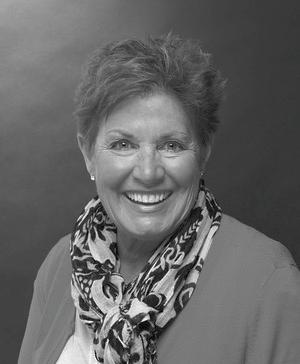



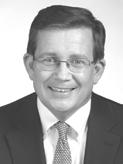
The San Francisco Recreation and Parks Department will begin renovating the Potrero Hill Recreation Center, at 801 Arkansas Street, this spring. The facility will remain open, on its regular schedule – Monday through Friday, 9 a.m. to 9 p.m.; Saturday, 9 a.m. to 5 p.m. – throughout the process.
Changes will include installation of natural turf on the baseball and softball fields, with improved grading, drainage and an irrigation system, as well as creation of an accessible pedestrian path along the fields’ perimeter. Baseball equipment and furnishings will be added, and a fence erected along Arkansas Street.
In partnership with the Potrero Hill Neighborhood Transportation Plan – a San Francisco County Transportation Authority community-based transportation plan for southern Potrero Hill – lighting will be improved along the Walking School Bus Route pathway.
“Potrero Hill Recreation Center renovation features will include site work and upgrades to meet Americans with Disabilities Act standards,” said Joseph Griffin, Rec and Parks Department communications and public affairs associate.
Rec and Parks will also create a sand dog play area, and make improvements to the off-leash dog zone located on the facility’s upper northside grounds, including “…pathway grading and paving,” said Griffin. The completion date for the improvements hasn’t yet been determined.
“We’re certain that the renovations will proceed as planned. The Recreation Center is a very important resource to the community. It is able to serve so many people, whether those are people playing sports to groups holding special or community events. The Center has a very broad reach,” said J.R. Eppler, Potrero Boosters
president, and a candidate for District 10 Supervisor.
William Phillips, a resident of the 600 block of Arkansas Street, was surprised to hear about the many changes scheduled for the facility. “I could support that. This is all fabulous,” said Phillips.
“The Recreation Center is a nearby resource and a jewel of the community,” Thu Banh, Bridge Housing senior manager for community development, said. “It’s been underutilized in recent years by public housing residents. Anything that makes the Center better and more welcoming is beneficial.”
According to Banh, several years ago Potrero Annex-Terrace residents advocated for better lighting in certain spots along the Walking School Bus Route to Daniel Webster and Starr King elementary schools. The pathway starts at 1095 Connecticut Street, with Walking School Bus Route “bus drivers” splitting participating children into two groups divided by school at a midpoint in the route.
The Walking School Bus is sponsored by the Healthy Generations Project, a nonprofit dedicated to reducing stress in young children. “Rec and Parks held community meetings to get input. Several residents came and gave testimony. (The) path can be very dark, especially during the winter months. The Daniel Webster students walk through the Recreation Center to get to the elementary school. The fact that (more of the) path will be lit makes the walk safer for them,” said Banh.
“There is a lot of support for formalizing areas as appropriate for off-leash dog use,” said Eppler.
Adrienne Arieff, a Hill resident and dog owner, welcomes the dog park renovations. “I would totally use them,” she said.
Nicky Jacobson, founding member of Toes & Paws for Greenspace, a nonprofit that promotes inclusivity for
people and dogs at Potrero Hill and Dogpatch parks, said members of her group regularly participated in public discussions on the renovations. “(One of our concerns) is the area to the north of the main, fenced-in baseball field. That area needs to be designated as an official off-leash dog play area. We have a petition signed by over 100 people requesting that. That number includes residents and business owners,” said Jacobson.
Jacobson is concerned about the off-leash dog play area located close to Arkansas Street, at the bottom of the hill. “A walkway is going to be connected to the stairs where Connecticut Street dead-ends. They are
redoing that pathway. It makes no sense to have pedestrians and the offleash dogs in the same area. It will just lead to conflict,” said Jacobson. According to Hill resident Ray Vaughn, who has been walking his dogs near the Center for 20 years, communication is key to effective resolutions regarding space. Vaughn said over the years friendly interactions between dog owners and other facility users have “converted” Hill residents and visitors to welcoming dogs. “There’s nothing like a couple of people walking dogs to make the area a little safer,” he said.







A staircase will ultimately replace a steep and rugged dirt path that follows 22nd Street between Missouri and Connecticut streets. The project is being led by Friends of the Potrero Hill Recreation Center (FOPHRC), a community group operating under the auspices of San Francisco Parks Alliance, whose board includes Jennifer Serwer, Kara Portnow, Maulik Shah, Tucker Kalman, and Lisa Tehrani.
According to Serwer, who lives on Caire Terrace, which crosses the 1200 block of Carolina Street, the stairs are being funded through a $102,000 planning grant from the Mayor’s Office of Housing and Community Development (MOHCD), as well as $500,000 provided by the University of California, San Francisco. The project is expected to be completed by the end of next year.
FOPHRC started planning the project in 2015. Serwer, who owns Hibiscus Studio, a design firm, created an initial version of the staircase pro bono. “Potrero Hill will have beautiful contemporary steps that function like the Filbert steps up Telegraph Hill,” she said.
FOPHRC is now working with MOHCD to identify a landscape architect to finalize staircase design. In addition, the Department of Public Works (DPW) will complete a site survey to determine the parcel’s size, location, and utility needs.
“FOPHRC wants 22nd Street to become a well-traveled pedestrian thoroughfare from Dogpatch to the Recreation Center, and of course the top of Potrero Hill and beyond,” said Serwer.
The staircase is intended to be safer, more accessible, and better looking than the existing path, which is uneven and difficult to traverse. It’s spotted with loose gravel, bits of broken glass, and large rocks. There are no lights or guard rails.
“There are concerns about safety where the Recreation Center runs into Connecticut Street. It can be dark and treacherous. The Rec and Parks staff, DPW staff, and FOPHRC have been working together very well to create the stair connections along 22nd Street down the hill,” said J.R. Eppler, Potrero Boosters president and a candidate for District 10 Supervisor.
According to San Francisco Police Department (SFPD) Captain Steven Ford, Hill residents have expressed concerns about young people loitering and vandalism in the area. SFPD responded with increased police presence, including “passing calls” and intermittent surveillance. “I will continue to meet with merchants and residents to make certain lines of communication remain open,” said Ford. “Moreover, information is consistently disseminated through the Bayview Newsletter, tweets, and ongoing meetings and presentations.”
“UCSF is building two new developments in Dogpatch, student housing on Minnesota Street and a Department of Psychiatry Child, Teen, and Family Center on Third Street,” said Christine Gasparac, UCSF senior director of community relations. “In accordance with UCSF’s community planning principles, whenever we expand our presence in a neighborhood or (develop in) a new neighborhood, we engage in
Sometimes the thing you’re looking for is right in front of you. In fact, it’s been here all this time.
With really good coffee. And cool friends. Let’s hang out.
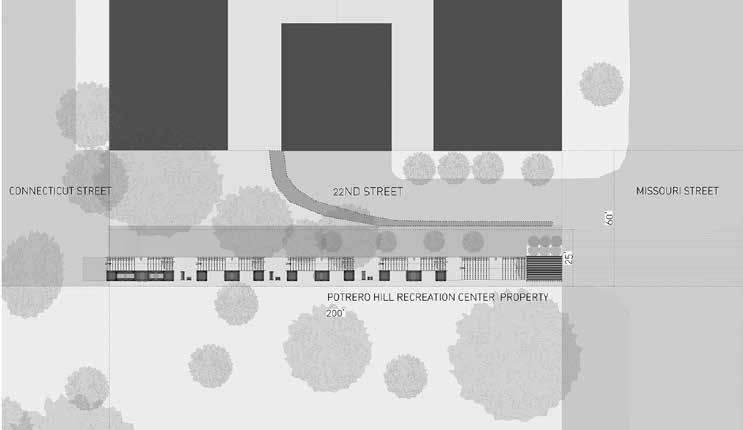
a voluntary process in which we work with the community to offset any particular effects of our development. We consulted our advisory group, the UCSF Community Advisory Group, which meets quarterly, as well as a task force we formed to look at UCSF’s expanded presence in Dogpatch. This was a priority project for the neighbors and was on their list.”
According Gasparac, UCSF’s decision to fund the staircase involved an eight-month review process. “In April 2017, we announced the projects that would be funded as a result of the task force. In order to spend University funds on the project, there needed to be
a nexus between the project’s benefits to the neighborhood and UCSF. This project will be mutually beneficial for UCSF staff and students as well as neighborhood residents. This staircase is a critical pedestrian connection for the neighborhood. It provides better access to the Library, the Potrero Hill Recreation Center, the shops on Potrero Hill, and the CalTrain station,” she said. Joan Goldman, a resident of the 600 block of Arkansas Street, is enthusiastic about the prospect of the staircase. “Right now, it’s sort of a rocky runoff. It’s great; I’ve wanted a stairway and lights for years,” she said.
If one had to pick a single word to describe Bayview District’s new police captain, Steven Ford, it’d be “busy.” In addition to his captain duties, Ford teaches night courses in criminal justice at City College of San Francisco, is pursuing a doctorate in educational leadership at St. Mary’s College of California, and makes time for friends and family.
Ford took over the Bayview District from Captain Raj Vaswani last fall. He’s dedicated to doing police work in San Francisco, as a result of his personal background and the City’s political and social climate. He and his family moved to the East Bay in the mid-1990s, but Ford has strong ties to Bayview, going back generations. His parents grew up in the neighborhood – his mother on Navy Road in Hunt-
ers Point; his father on Connecticut Street in Potrero Hill – and both his grandmothers had funeral services at Bayview churches. His wife’s family also grew up in Bayview.
“I have a history with Bayview that goes back to the early-1940s,” Ford said. “And I spent a good amount of the time in Bayview as a kid.”
Ford was born in Daly City, spent his formative years living on Oceanview Avenue, and attended Westmoor High School. In 1987, when he was 21, an administrative justice class piqued his interest in policing, which he studied at San Francisco State University, earning his bachelor’s degree before acquiring a master’s degree from California State University Long Beach in emergency services and administration. In 1991, his first post after police
FORD continues on next page

field training was Bayview.
“Bayview is a special place,” he said. “A lot of people in the community I have personal ties to that go back to my teenage years, which has served me well transitioning as captain.”
Those personal connections inform him about community issues and concerns. “I communicate with the community to put them at ease and help them feel better about the issues at the time,” he said. “And most importantly, it helps to create an open, transparent, reciprocal relationship with the community.”
Ford cites his biggest accomplishment as raising his family. “As I get a little older and hopefully wiser, I put things into better perspective,” he said. “My biggest accomplishment is maintaining a happy, healthy family, and a supportive marriage for more than 25 years.”
When he was 13, Ford visited relations in Long Beach, who exposed him to weightlifting. Thereafter, he asked his mother to purchase a weight set for him, beginning a serious quest into powerlifting. “What kept me from doing it fulltime is the time commitment,” he said. “At that period in my 20s, I had a young family. Between work and personal obligations, I wasn’t able to commit to bodybuilding. But I ate like and trained like one, and I had friends who were competitive.”
Ford still has bodybuilding friends, amateurs and professionals. He attends bodybuilding shows two to three times a year, and maintains a focus on diet and exercise. “I love exercising and educating myself on how food works, and how the body reacts,” he said. “I’m still cognizant of what happens even though the goal is no longer to get bigger and stronger. But I still maintain as much lean muscle as possible.”
Ford started pursuing a doctorate in educational leadership in 2016 after 10 years of mulling it over. “I’m a huge proponent of education,” he said. “I think it’s critical in every aspect of
FORD continues on page 18
In the midst of San Francisco’s myriad frilly bars and restaurants there are local haunts where families with young children can enjoy a good low-stress meal together. The criteria that make for a kid-friendly establishment are quite different from what single, twenty-something, diners or an elderly couple might seek. Parents with rowdy toddlers might prefer eateries that can accommodate food being thrown and ones that provide distractions for young minds, such as crayons.
Last year Eater San Francisco compiled a list of 20 children-friendly restaurants across the City. The only spot in the Southeastern neighborhoods that made the cut was Stem Kitchen & Garden, at 499 Illinois Street. Its selling point is the farm-to-table concept, where produce is harvested from an onsite garden. The gourmands at Eater SF found the offering to be a great educational opportunity for youth.
“Here’s a spot that’s really good for discovering that food comes from the soil, not the grocery shelves,” wrote Laurie Jo Miller Farr. “City kids can interpret farm-to-table appreciation while roaming among rows of veggies in a rooftop herb garden with bocce court, fire pits, and waterfront views as distractions that beat sitting still at the table. Order the kids a pizza garnished with greens grown in the garden.”
The San Francisco Moms Blog guided San Francisco readers through more than 100 kid-friendly restaurants, and deemed ‘aˉina, 900 22nd Street, as a good brunch spot for the whole family. This Hawaiian restaurant serves dinner as well in a casual atmosphere. A Kids Bento Box, priced at $8.50, offers scrambled eggs, Katsu chicken, seasonal fruit, short grain rice, furikake and Portuguese sweet bread.
The blog recommended 21st Amendment Brewery and Restaurant, Tropisueno, Yank Sing and Zero Zero as choice options for youngsters South-of-Market. Yelp offers a list
of kid-friendly eateries that includes ‘aˉina and Zero Zero. Mac Daddy, 1453 18th Street, and Alta, 1275 Minnesota Street. For older kids, Yelp suggested the Coin-Op Game Room, 508 Fourth Street. Goat Hill Pizza, 300 Connecticut Street, is considered the go-to spot in Potrero Hill by residents as well as the SF Moms Blog given the featured cuisine and an overall family-friendly atmosphere.
“We provide a lot of options for kids on our menu, such as an all-you-can-eat option that’s priced at $6.95 for kids,” said Oscar Barajas, assistant manager, Goat Hill Pizza. “We offer crayons and paper, and some of the drawings get put up on the wall. We have stickers for young kids as well. The neighborhood has a lot of families, so we want to provide a welcoming environment to them. Some other restaurants in the
neighborhood are very fancy, so we’re a good option for families with children.”
Nicholas Cifuentes, West Portal resident and father of two toddlers, regularly dines out with his kids. Cifuentes considers the Hill to be the City’s most family-friendly neighborhood, and has a slew of restaurants on his list as options for dinner. His favorite is Sunflower Vietnamese Restaurant, 288 Connecticut Street, though he also likes Goat Hill Pizza, Mochica, 1469 18th Street, and Pera, 1457 18th Street. For brunch his family sometimes goes to Just for You Café, 732 22nd Street.
“We’re no strangers to having to deal with finding good places to bring toddlers,” Cifuentes said. “We frequent Sunflower. At first glance you wouldn’t
KID-FRIENDLY continues on page 18




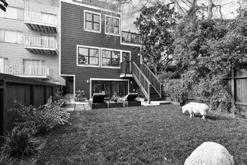

Nip advises families to look beyond standardized test scores. “Some of the hidden gem schools, they don’t have high test scores, but families are very happy with them,” she said.
Test scores don’t necessarily reveal the quality of instruction or number of support positions – guidance counselors, library aides, special education teachers – at a school. As one parent told the View, “You have to parse aggregate data down to subgroups to get anything meaningful from it. If high poverty students are doing well at a school, that tells me more about the school and that it must be doing something right.”
Nonetheless, test scores can be a compelling factor when there are large discrepancies between the highest and lowest performing schools. The state requires students to be tested from third to eighth grades, and then again in 11th grade. The Smart Balance exam, which has been used for three years, places students in four categories: did not meet standard, nearly met standard, met standard or exceeded standard. For easier evaluation, the latter two are often combined into a passing grade.
At the high school level, Lowell is by far the prize assignment, with a bit more than one-third of applicants for the 2017 academic year listing it as their first choice. Annually ranked by several national publications as among the country’s best high schools, it’s one of just two SFUSD schools for which acceptance is by merit, not solely by lottery. The other is the more specialized Ruth Asawa School for the Arts.
In standardized tests administered last year, Lowell topped all San Fran-
cisco schools in English and math, with 94.6 percent and 89.6 percent meeting or exceeding standards. However, only 17 percent of those requesting Lowell were accepted for the 2017 school year.
Abraham Lincoln High was the second most requested high school, with 19 percent listing it as a first choice, followed by Balboa, 11 percent, George Washington and Galileo, each with nine percent. Along with Raoul Wallenberg, which isn’t as widely requested, and Gateway, a charter school not involved in the lottery process, all posted fairly similar test scores, ranging from 71 to 75 percent passing standards in English, 52 to 62 percent in math. Only Balboa trailed, at 67 percent and 48 percent respectively, though these scores reflected a six percent improvement in both subjects from 2016.
When it came to actual 2017 assignments, however, 53 percent of applicants were directed to Lowell, Lincoln, Washington or Burton high. Seventeen percent of candidates didn’t get any of their choices. Most of these students were assigned to Phillip and Sala Burton, which had test scores that trailed by close to 30 percent from the others. The remaining students were consigned to Thurgood Marshall or John O’Connell.
While O’Connell posted similar results to Burton in English, with 43 percent passing the standard, only 12 percent of its students met or exceeded math standards. At Marshall, only onefifth of students on both tests reached the passing level. These weren’t San Francisco’s worst performing high schools, however. Those, unsurprisingly, were continuation schools for
students deemed at risk of not graduating, including Downtown High School on Vermont Street and Ida B. Wells.
There isn’t a direct correlation between test scores and school requests when it comes to the District’s 70 elementary schools, except for the worst performing. Grattan, Alvarado, Rooftop and Claire Lilienthal followed Clarendon as the most requested first choices, with West Portal being the second most popular alternate choice. However, the four elementary schools scoring highest on standardized tests were Chinese Immersion School at De Avila, Lawton Alternative, George Peabody and Sunset, all seeing more than 80 percent of their tested students achieving passing grades in English and math.
Overall, San Francisco’s elementary school students scored higher on tests than their older peers. Discarding merit-based Lowell and Asawa, the top eight schools on the English exam, and top dozen in math, were all elementary institutions. Noteworthy is Ulloa, which had the highest number of economically disadvantaged students performing well, with more than half exceeding, and 86 percent overall at least meeting, math standards.
At the lower end, with the fewest meeting or exceeding standards, were Bret Harte, 7.9 percent, Dr. Charles R. Drew, 12.1 percent, and Cesar Chavez, 12.3 percent, in English; and El Dorado, 8.7 percent, Drew, 8.9 percent, and George Washington Carver, 10.2 percent, in math.
More than half of 2017 first choice requests were spread among 17 schools; less than 10 percent of requests listed 23 other schools as a first choice.
The same discrepancy can be found in the City’s middle schools. Four schools made up 53 percent of first choices for applicants last year: Giannini, Herbert Hoover, Presidio and Aptos. While four others – Willie Brown Jr., Visitation Valley, Martin Luther King and James Lick – received only six percent of first choice requests.
Giannini had the highest test scores – 75.9 percent in English; 73.9 percent in math – among middle schools, with Presidio second; 71.5 percent and 69.7 percent. The next best was Theodore Roosevelt, 70.3 percent, 62.6 percent. Westborough and Hoover were close behind, with more than 60 percent making the grade on both tests. Two charter schools, both kindergarten through eighth grade, also did respectable in testing, with Mission Prep coming in at 71.7 percent and 65.5 percent respectively, and Creative Arts at 71.5 percent and 55.2 percent.
Among the four least requested middle schools, Martin Luther King performed the best on tests, at 40.7 percent and 33.7 percent, followed by Lick – 26 percent, 18.5 percent – Visitation Valley – 21.6 percent, 11.3 percent – and Brown, 20.9 percent, 10.4 percent.
Overall, San Francisco schools exceeded state averages in achieving passing grades in English – 54.6 percent to 48.6 percent – and math, 51.9 percent to 37.6 percent. The numbers held up amongst English learners and economically disadvantaged students as well, with a glaring exception. When it comes to African-Americans and Hispanics, the City scores lower than state averages, particularly among
SCHOOLS continues on next page





the disadvantaged. The lowest scoring schools are likely a drag on those numbers. Chavez is just 2.6 percent White, Harte 1.7 percent, Carver 1.4 percent, El Dorado 1.3 percent, Marshall one percent and Visitation Valley and Drew 0.5 percent.
A recent study by Innovative Public Schools, a nonprofit that pushes for more charter schools, which is at odds with SFUSD’s goals, claimed AfricanAmerican and Hispanic students were underperforming at stronger schools as well. It’s an area that new Superintendent Vincent Matthews has cited as one of his main focuses for improvement.
San Francisco girls are besting boys on English tests, with 60.2 percent compared with 49.4 percent making the
passing mark, but are near identical in math, with girls slightly edging boys, 51.7 percent to 50.2 percent.
As far as transitional kindergarten requests go, Noriega, Argonne and Drew made up more than half the first-choice requests last year, but roughly half the students were assigned to Drew, Tule Elke Park and Harte. Pre-kindergarten requires tuition or subsidized care to attend.
When it comes to Potrero Hill, 64 percent of students from the 94107 zipcode received their first choice of schools last year; 12 percent didn’t receive any of their preferences or failed to request a choice.
SFUSD data doesn’t distinguish between those who are assigned to schools solely by lottery as compared with those assigned as a result of tiebreakers. In the lottery’s first round preference is given if a sibling already attends the school and if the student resides in a City area with low test scores or within the same zip code as the school.




Now through 2/25
Theater: Reel to Reel
John Kolvenbach (Sister Play, Mrs. Whitney, Goldfish) returns to Magic to direct the world premiere of his own Reel to Reel. Fascinated by the relationship between sound and memory, Kolvenbach wrote the story of a fifty-fiveyear marriage as told through the simple sentiments of recorded conversations, arguments, and household noises. What emerges is a collage of life captured on audiotape. Magic veterans from the 1980’s, Will Marchetti (Fool for Love premiere) and Carla Spindt (Aunt Dan and Lemon), are Walter and Maggie. Their younger counterparts are played by Magic favorites, Zoë Winters (Mauritius) and Andrew Pastides (Fool for Love, 2017).
$35 to $80. Magic Theatre, Fort Mason, Two Marina Boulevard. For tickets and more information: www. MagicTheatre.org or 415.441.8822.
Lunar New Year: Year of the Dog
Kickoff the Year of the Dog with a night devoted to canine companions and Lunar New Year traditions. Begin the celebration with a lion dance performance
and ceremony by San Francisco’s Jing Mo Athletic Association, a Chinatown-based martial arts performance troupe. Chat about the history and contributions of Chinese-Americans with in-theknow historians from the Chinese Historical Society of America, and dig deep into China’s vast and storied past with the Stanford Archaeology Center. Soothe your soul and meet adoption- and fosterready dogs from Copper’s Dream Animal Rescue. And more. Members $12; Non-Members $15. California Academy of Sciences, 55 Music Concourse Drive, Golden Gate Park. For more information: http://bit. ly/2GfYzro
2/1 through 2/10
Theater: Proof of Life
Jeffery Michael Janes lost his sense of identity as he fell from extreme privilege to solitary homelessness in San Francisco. His dedication to documenting his descent into namelessness was his path out of madness, and the engine behind Proof of Life, opening at the Potrero Stage February 1. The brainchild of drama therapist Lena Mullins, the play is a textured blend of Janes’ writing, the creative
license of playwright Richard Ciccarone, soulful cello, and operatic voice. “The choices he made were quite extreme, but the story is that universal theme of questioning your existence, the drive for survival and what one will do to prove you are a part of this world and what you go through to cling on,” said Mullins. Janes’ compelling story led Mullins and Ciccarone to create Passing Words, a theater company founded to produce works that give witness to an individual’s life. Proof of Life is their first production. Starring Lena Mullins, David Richardson, Chris Pflueger, Cole Alexander Smith, soprano Ann Elizabeth Jones and cellist Eugenio Solinas. 8 p.m., February 1, 2, 3, 8, 9, 10. The Potrero Stage, 1695 18th Street. For more information: www.passingwords.com.
2/2 through 3/30
Art: Then and Now, a Printmaking Exhibit
Graphic Arts Workshop, a printing cooperative in Dogpatch, exhibits recent print works alongside a tribute to the Workshop’s 1953 founders. Monday to Friday, 9 a.m. to 5 p.m. Opening reception, Friday, February 9, 6 to 9 p.m. Free. Dependable Letterpress, 1192 Illinois Street. For more information: Clare Metague, claremetague@gmail.com.
Art: Bianca Levan
Join us for an art opening for local artist, Bianca Levan. 7 to 9 p.m. Farley’s, 1315 18th Street.
2/3 through 3/31
Art: Ethereal Landscape
Themes+Projects gallery presents, Ethereal Landscape, featuring new works from Bay Area artist Sahba Shere. This collection of dream-like paintings reflects meditations on the natural world, imbuing abstract landscapes with translucence and tranquility. The show emphasizes Sahba’s ability to create quietly beautiful, layered works with subtlety and lightness, and yet also depth and texture. Artist reception, Saturday, February 3, 6 to 8 p.m. Free. 11 a.m. to 5 p.m. Themes + Projects, 1275 Minnesota Street, Suite 205. For more information: http://bit.ly/2F6Mxze
Music: Original Famous
Twang Sundays
Come by every Sunday for an all-ages concert series.
There’s always a fresh traditional or contemporary live act, and a surprise special to purchase from the kitchen. 4 to 7 p.m. Free. Thee Parkside, 1600 17th Street. For more information: http://bit.ly/2DFE8Ge
Comedy: Misery Index
“Misery Index” is a free, monthly, show that brings together some of the most pessimistic, neurotic and dysfunctional individuals on the face of the planet: stand-up comedians. Take the edge off with cheap drinks and free laughs as these choleric comics direct their disdain towards society’s growing ills. Each month features local and touring comedians seen on Comedy Central, HBO, NBC’s Seeso, Hulu and Viceland. 8 p.m. Free. The Rite Spot, 2099 Folsom Street. For more information: http://bit.ly/2E5Xcv1
Safety: Earthquake Preparedness Workshop
Matt Springer, a University of California, San Francisco Department of Medicine professor, presents a talk and slideshow about precautions that can be taken to lessen the damage from an earthquake at home and work. The presentation includes photographs of preparations in Springer’s home, and suggests measures ranging from the simple to the complex to prepare for the next temblor. Free. 6 to 7 p.m. San Francisco Main Library, 100 Larkin Street. For more information: http://bit.ly/2DABLVL
Music: Daniel Berkman
Potrero Hill resident Daniel Berkman is a composer, multi-instrumentalist and innovator of the kora, a 21-stringed harp/lute from West Africa. 7:30 to 9 p.m. Farley’s, 1315 18th Street.
History: Shaping San Francisco Lecture
Celebrating the release of a new map of San Francisco, “Nature in the City” reflects a rich and recent understanding of what comprises a place. An update of a 2006 map, the rework includes a total of five charts, highlighting species that live alongside homo sapiens, geology, gardening, restoration, and connections within the Bay-Delta. Mary Ellen Hannibal, author of Citizen Scientist, Rebecca Johnson, from the Academy of Sciences, and map artist Jane Kim speak about the making of

the map, contributions of citizen science to our broader knowledge of place, and how this collaboration expresses the kind of emergent creative work needed to meet the challenges of our day. Co-hosted by Nature in the City, natureinthecity. org. 7:30 p.m. Free. Eric Quezada Center, 518 Valencia Street. For more information: http://bit. ly/25o3Qoc
Baseball: KNBR Giants
FanFest 2018
Includes live KNBR broadcasts from the field, player question sessions, free autographs, a kids’ zone and more. There’ll be opportunities to roam the field and meet players like Hunter Pence, Brandon Crawford, Buster Posey, Madison Bumgarner, plus a chance to take photographs with the World Series trophies. Note that lines to meet popular players can be extremely long; come prepared to be patient. Free. 10 a.m. to 3 p.m. AT & T Park, San Francisco. For more information: http://atmlb. com/2BqozNm
Books: SF Public Library’s $1 Book and Media Sale
The second Saturday of each month, rain or shine, the San Francisco Public Library opens the doors to its Book Donation Center for a massive $1 sale. Selection changes monthly; random treasures abound. Come pickup choice books and media at unbeatable prices: just one dollar each. Sales proceeds support the San Francisco Public Library. The Book Donation Center, 1630 17th Street. 10 a.m. to 2 p.m. For more information: http://bit. ly/2zs6mhM
Valentine’s Day: Make-AValentine Snail Mail Social
Celebrate the love of the handmade for Valentine’s Day. Type your loved one a letter on vintage typewriters. Decorate your notes with markers, rubber stamps and more. 1 p.m. to 3:30 p.m. Free. Arch Art & Drafting Supply, 10 Carolina Street. To register and for more information: http://bit.ly/2E34PCd
2/10 through 2/11
Lunar New Year: 2018 Chinatown
New Year Flower Fair
Each year, the Chinese New Year Flower Fair takes place the weekend before the Lunar New Year holiday, so that families can purchase traditional holiday plants, flowers and fruits while enjoying Chinese dance, music, art and cultural displays. There’ll be an abundance of auspicious foods and old-style entertainment. Chinese opera, dance – lion and otherwise – will be performed, along with an array of entertainment from other Asian cultures. Free. Saturday, February 10, 10 a.m. to 8 p.m. Sunday, February 11, 9 a.m. to 6 p.m. Grant Avenue, from Clay to Broadway and Jackson. Pacific Avenue, from Kearney to Stockton. For more information: http://bit.ly/1PJ7XpT
Animals: San Francisco
Beer Week
Senior dogs are often taken for granted, making it harder for them to find their fur-ever home. This San Francisco Beer Week, drink to make a difference at SPARK’s inaugural Pints for Paws fundraiser, benefiting Muttville Senior Dog Rescue. It’s a bowwow pow-wow, where humans can enjoy all you can drink beer and grub from 10+ food trucks while pups sniff and socialize in the ruff-freshing, collie-fornia sun. Noon to 4 p.m. $40, for all you can drink craft beer. All ages, dogs and dog lovers welcome. Rain or shine. SPARK Social SF, 601 Mission Bay Boulevard North. For more information: http://bit.ly/2DwVVMj
Mardi Gras: Carnaval Season Kick-Off Party
Enjoy live samba drummers, dancers winding their way through the party, and lively music from salsa and soca to cumbia and rumba. Wear your costumes, masks, and beads and join in celebrating Fat Tuesday in true Carnaval, San Francisco style. 6 to 10 p.m. Free. Cha Cha Cha, 2327 Mission Street. For more information: http://bit.ly/2DzfnZ3

Food: San Francisco Beer Week
Spend your Saturday with 20+ of the West Coast’s top IPAs at Hops on Fire, part of San Francisco Beer Week. Plus 10+ food trucks serving spicy food, and a Hop-Xibit where you can learn about IPAs from industry professionals. Noon to 4 p.m. $42.99. SoMa StrEat Food Park, 428 11th Street. For tickets and more information: http://bit. ly/2DCzkBY
Music: Soul Delights
Join us for a lively performance. 7:30 to 9 p.m. Farley’s, 1315 18th Street.
Music: Goat Hill Geezers
Live Music by The Goat Hill Geezers, who do covers of Beatles, Eagles, Everly Brothers, Simon & Garfunkel, Joni Mitchell and Crosby, Stills, Nash and Young. 7:30 to 9 p.m. Farley’s, 1315 18th Street.
2/23 through 2/25
Film: Bay Area International
Children’s Film Festival
����� I�������� F���� C�������� ST. TERESA OF AVILA

Saturday
Sunday
Tuesday


The Bay Area International Children’s Film Festival returns for its 10th anniversary to engage the Bay Area’s youngest movie and animation enthusiasts with culturally diverse films from around the world, panels with internationally renowned filmmakers, and one of a kind, hands on filmmaking and animation workshops. This year’s festival line-up includes animated, live action, shorts and featurelength films, “How did they do that?” presentations, and question and answer sessions with awardwinning flickmakers. Films hail from South Africa, Taiwan, Brazil, Iran, Haiti, Belgium, Switzerland, France, Sweden, Norway, Ireland, and Canada. Chabot Space & Science Center, 10000 Skyline Boulevard Oakland. For tickets and more information: http://baicff.com.
Lunar New Year: Chinese New Year Parade
Started in the 1860’s by the Chinese in San Francisco to educate the community about their culture, the Southwest Airlines Chinese New Year Parade is one of the few remaining night illuminated parades in North America, and the biggest celebrating the Lunar New Year outside of Asia. It’s been named one of the top ten parades in the world by International Festivals & Events Association. 6 to 8 p.m. For bleacher
tickets: http://bit.ly/2mnRn4m Or, tune in to watch it on television on KTVU Fox 2 or KTSF Channel 26.
2/24 through 2/25
Lunar New Year: Street Fair
The Chinatown Community Street Fair takes place the weekend of the Chinese New Year Parade, and is an opportunity to experience Chinese cultural arts, such as Chinese folk dancing, opera, drumming and much more at the entertainment stage on Washington Street below Grant Avenue. Get a family photograph with giant puppets, dragons and other memorable artifacts. More than 120 booths and concessions. Traditional and modern entertainment performances on the main stage both days: folk dances from throughout Asia, acrobats, lion dancing, and magic demonstrations. Saturday, February 24, 10 a.m. to 4:30 p.m.; Sunday, February 25, 9 a.m. to 5 p.m. Grant Avenue from Clay to Broadway; Pacific Avenue from Kearny to Stockton; Jackson Street from Kearny to Stockton. For more information: http://bit. ly/2FdbRno
Art: Women Who
Transformed Art in the West Sponsored by Stanford University and Minnesota Street Project, this public symposium celebrates the rise of notable western women artists during the last century, and the prospects for achieving gender parity in the western art scene today. The event is part of the Bill Lane Center for the American West’s ongoing ArtsWest Initiative. 3 to 5 p.m. Minnesota Street Project, 1275 Minnesota Street. For more information: http:// stanford.io/2DJ13k0
Lunar New Year: Chinese New Year Celebration at the Zoo Marvel at traditional Chinese lion and folk-dance performances, at 11 a.m. and 1:30 p.m. Go on a Zodiac scavenger hunt through the zoo to learn fun facts about the animals found on the Chinese calendar. Stop by Wolf Canyon to celebrate the Year of the Dog. If you were born in the Year of the Dog – 1922, 1934, 1946, 1958, 1970, 1982, 1994, 2006, 2018 – receive free zoo admission; valid photo identification required. 10 a.m. to 4 p.m. San Francisco Zoo, Sloat Boulevard at The Great Highway. For more information: http://bit.ly/2DBaH8J
This month's winner of the View's Kids' Photography Contest is Kansas Street resident Rohan Birla. Rohan is seven years old, and attends AltSchool in Dogpatch. He took the images with his grandpa's, Bharat Shah, aka "Dada," iPhone. Rohan was awarded $35 for his pictures. Submit your child's photos (see contest instructions below)!

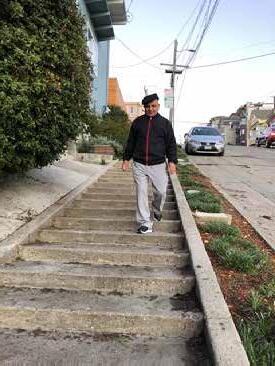




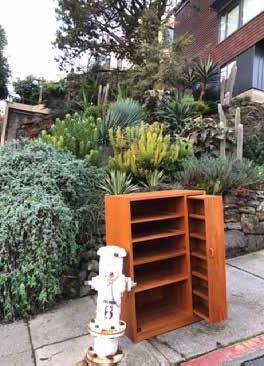

Kids 13 years and younger can submit a photo once a month, before the 20th, with the winning image receiving $35. Please send submissions to editor@potreroview.net.


We love calling Potrero Hill our home. Over the past decade-plus, we’ve helped dozens of clients find their perfect spot on the Hill. It’s easy to sell the virtues of our beloved neighborhood, having lived and worked here ourselves for more than 20 years. This year, we are proud to annouce that Zephyr Real Estate’s TOP PRODUCING POTRERO TEAM OF 2017!
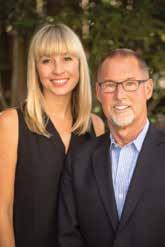
Wes Freas
REALTOR®
LIC# 013122854
415.518.6538
WesFreas@ZephyrSF.com
Wendy Watkins
REALTOR®
LIC# 01854549
415.367.5997
WendyWatkins@ZephyrSF.com
WesandWendyHomes.com
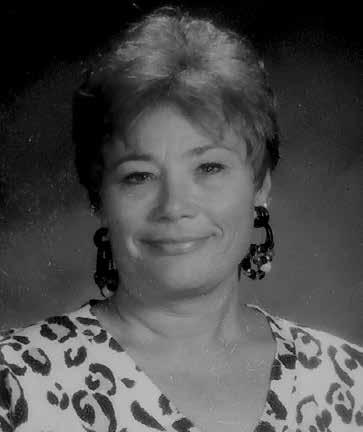
Carolyn Anaya
March 9, 1945 — September 21, 2017
On September 21, 2017, Potrero Hill native Carolyn Anaya passed away. Carol was born in 1945 to Ernest and Lillian Carden. She grew up on 18th and Rhode Island streets, and attended Patrick Henry Elementary, Everett Middle, and Galileo High schools.
After she graduated, she worked in various positions, including at a bank, Livingston’s Department Store, and as a San Francisco Unified School District teacher. She dedicated the last part of her career to the San Francisco Recreation and Parks Department, serving as an inclusion coordinator for the disabled community. For 11 years she worked as an adult senior counselor at Pine Lake Day Camp, located inside Stern Grove.
Carol is survived by her longtime partner, David Dinslage; her sisters Judi, Sandra, and Gail; her daughter-in-law, Silva; and many nieces, nephews, grandchildren, and great-grandchildren.
“Joe was a wonderful man,” said Corinne Woods, chair of the Mission Bay Citizens Advisory Committee. “He was interested in and concerned with other people and his community. He was always willing to share his deep knowledge, and remind us to keep our sense of humor in working with the City. Joe was instrumental in helping Dogpatch and Potrero respond professionally to the challenges of the massive changes of the past 10 years,”
“Joe was a neighborhood treasure who cared deeply about civic life in San Francisco, specifically Potrero Hill and Dogpatch,” said Dennis Herrera, City Attorney. “His commitment, his civic pride, and his sense of humor will be deeply missed. There’s not a thing that was going on in Dogpatch or Potrero Hill that Joe didn’t have an opinion about or a view on. The neighborhoods are better off for his involvement,”.
“I am so sad to learn of his passing. I met Joe when I first came to work for the City in 2000. He and I both were on the Potrero Power Plant Task Force. He was a staunch community activist (who) wanted a positive future for Potrero and for the waterfront. He was an avid sailor at our own South Beach Harbor and was a real friend of District 10. I believe that he was a volunteer for Supervisor Sophie Maxwell. We’ve lost a dear friend to the waterfront and the City,” said Elaine Forbes, director of the Port of San Francisco.
Gerd Peter Tangermann
September 12, 1942 — January 9, 2018
Peter Tangermann worked until the week before he died at the age of 75. For decades he managed delivery operations and circulation for publications throughout the Bay Area, including the View, West Portal Monthly, Richmond Review, Sunset Beacon , Westside Observer, Castro Courier and Alameda Sun, among others. He’s remembered by many for his unflagging dedication to hard work and easy-going nature.
Born and raised in Oldenburg, Germany, Tangermann immigrated to the United States in the late-1960s, settling in San Francisco. While working on a cruise ship he met his former wife, Madlen Tangermann, with whom he fathered two daughters, Heidi Plank and Birgitt Brown. Native Californians, they now live in Colorado and Virginia, respectively.
“He grew up running river boats with his uncle,” said Plank. “He always loved the water. He never lost his love for boating.”
Plank recalled fond memories of helping her father with deliveries on weekends, along with her sister. In the mornings before venturing out on the route, Tangermann would cook them a big breakfast. When not working, he took them camping and on other outdoor adventures. Both Tangermann and Madlen kept close ties with family in Germany, and would frequently take their daughters there for visits during summer vacations.
Tangermann pursued his boating hobby throughout life, and was an active member of the Alameda Yacht Club. Most recently, he lived on a boat at the Fortman Marina with his
“Joe was an advocate for the waterfront and the Port. Joe was a pragmatist. His engagement (with) the Potrero Power Plant Task Force and the Eastern Neighborhood Task Force focused on shaping projects that allowed change. (The projects) delivered on environmental improvements and community objectives, including protecting the shipyard and maritime needs and the historic resources that give Dogpatch its identity. He was a consistent voice of support in the Port’s efforts to plan for and develop the Pier 70 Master Plan and SWL 337 RFP, and the project improvements that now are underway by Forest City, Orton Development and the S.F. Giants. I will miss his funny, irascible and charming presence,” said Diane Oshima, director of planning and environment, Port of San Francisco.
“I think Joe was very thoughtful. He had angles sometimes people hadn’t talked about. He was relentless. He worked so hard on keeping communities like Bayview together. It’s because of people like Joe that the District is cohesive. Joe had a vision of the whole, the District and the City. I think he was one of my favorite people. He had this way of disarming, with laughter. Personally, I feel a loss, especially right now in District 10. Joe’s voice, Joe’s perspective is missing,” said Maxwell, former supervisor of District 10, who served three terms between January 2001 and January 2011.
“Joe was a caring man who really worked to support his community. In
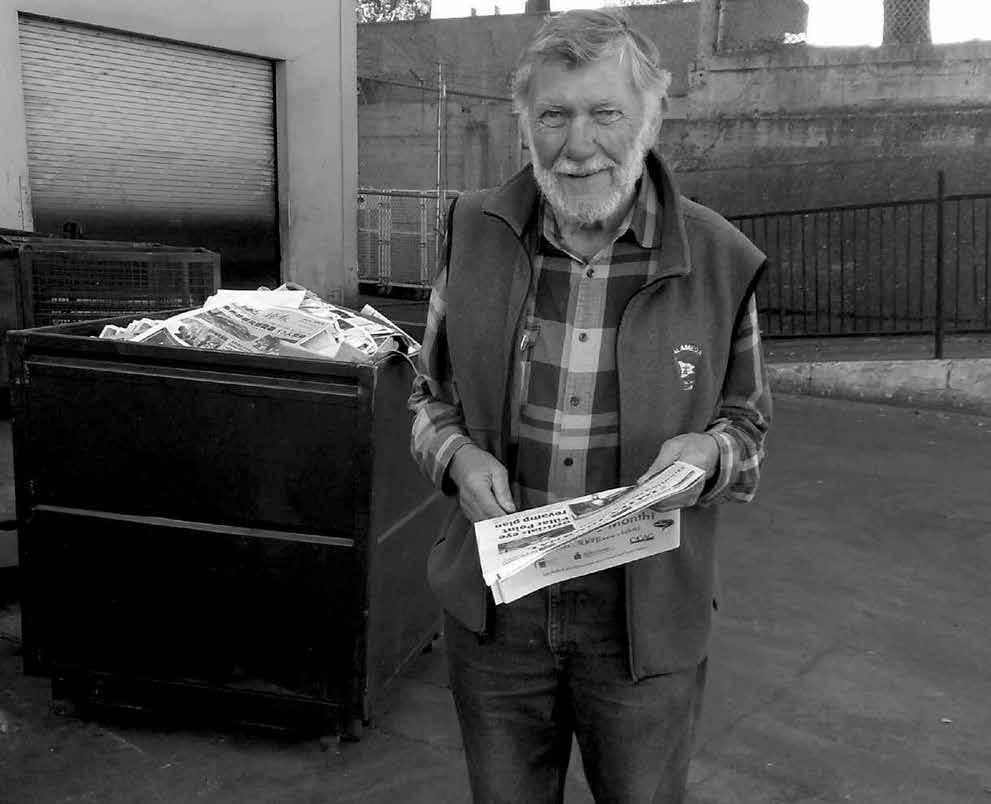
girlfriend, Judy Schilling. In addition to boating, Peter had a great passion for woodworking and canine companions. Though unable to have a dog on his boat home, he’d enjoyed having many of the animals throughout the years.
“He would build wooden model ships from scratch on the weekends,” said Brown. “He was very handy with wood. There’s a storage unit full of boats he made.”
Tangermann began his delivery service in 1968, steadily expanding over the decades, from distributing samples to flyers and, ultimately, many of the region’s newspapers. Arron Clark, who volunteers for Martin de Porres House of Hospitality, worked for Tangermann for 19 years, and warmly remembers his great sense of humor and the patience he showed people from all walks of life.
“He employed a lot people and
all that he did, he was a man of integrity and conscience. He tried to compensate and make whole the community from the negative effects of what development was doing. He was not fighting for his own ends or his own enrichment. He was fighting for the well-being of the community. He was a real asset to our community. Joe also worked to increase the involvement of merchants. He played an important role in bringing the Dogpatch perspective to the Potrero Dogpatch Merchants Association,”” said Philip de Andrade, co-owner of Goat Hill Pizza.
“Joe definitely played a very active role in neighborhood issues for many, many years. Joe had a quick wit and sarcastic sense of humor. He was never afraid to say things that most people were thinking, but wouldn’t say aloud,” said Susan Eslick, Green Benefits District board member and Dogpatch Neighborhood Association vice president.
“Joe really had a very big heart. He cared very deeply about his neighbors and the neighborhood. He would go to bat for his neighbors. He knew the people in City Hall and could point you in the right direction. He often did that without any fanfare, rather quietly,” said Keith Goldstein, past president of the Potrero Dogpatch Merchants Association.
“Joe was very involved in development and infrastructure matters. He had a very broad view of how the neighborhood connected to Mission Bay and
was willing to give anyone a job who wanted to work,” Clark said. “He never got to retire and not long ago was loading bundles of papers. Those of us who worked with him didn’t get a chance to share how much he meant to us.”
“He was a great guy and was very helpful to many people,” expressed Glenn Gullmes, publisher of West Portal Monthly. “His good sense of humor and generous nature will be sorely missed.”
“The last time I saw him, a few months ago, while he was delivering the View, I joked with him about when he was going to retire,” said Steven Moss, View publisher. “He told me he had a few more good years in him. I wished that’d been true.”
A memorial gathering in Tangermann's honor was held on Sunday, January 21 at the Alameda Yacht Club.
Bayview. He had a very wry sense of humor, and was able to bring that into negotiations and tough conversations. He had a line he’d like to say, “What a concept!” about something that should be, but to the speaker wasn’t, obvious,” said J.R. Eppler, Potrero Boosters president.
“I met Joe on Sophie Maxwell’s campaign in 2000. He was a hugely important figure in neighborhood politics and development. He knew and understood developers, but was on the neighborhood’s side. He was always really clear with developers that they could do more than what they were doing. Joe was brash and humorous. He was always trying to figure out where the agreement, the deal was going to be. He was very direct. He was always personally generous with his time, willing to hear what someone had to say and talk it through,” said Tony Kelly, Potrero Hill Democratic Club president and a candidate for District 10 supervisor.
“Joe has been a friend, an advocate, a critic, and a straight-up associate of the Nabe. When he worked as a consultant for developers, he did what I call ‘thoughtful development.’ Most of Joe’s work has been advocating for and strengthening the community,” said Edward Hatter, Potrero Hill Neighborhood House executive director.
“With regard to the Corovan project, he introduced the developers to me,” Hatter continued. “He opened that line
of communication between the developers and the Nabe. He would often make those introductions where we could make our own “ask.” He would give us parameters for the ask and work alongside us to better understand the revitalization of public housing. We have a very poor community and a very affluent community. Joe engaged in efforts like the movie projects that we premiered with Bridge Housing to show outdoor movies. These helped bring both sides of the Hill together. Also, Joe was just fun. He was so quick-witted. He could come in and sometimes be a little off the cuff. I kind of liked to be around him at a meeting. I’d go and sit next to Joe because he would make the meeting fun. People at community meetings were often very serious, very adamant about everything. Joe could crack a joke and make it go down easier. I miss him. He had that ‘spoonful of sugar,’”
“We both enjoyed making the neighborhood a better place for everybody. We didn’t always agree on everything. Sometimes I was more liberal, but Joe’s view was that really working with the neighborhood helped him see how people in the neighborhood felt. He was very smart. He’d get into the nitty gritty of things. He was very analytical about things, the way money should be spent. He had very strong opinions. I liked his smart, quick sense of humor. He was well-rounded, interested in food, wine, art, good conversation, and politics, of course,” said Carpinelli.
Carpinelli may hold a memorial service for Boss this spring. She asked that donations be made in his name to the Bay Area Association of Disabled Sailors. In addition to Carpinelli, he’s survived by his two children, Thomas Boss and Christina del Villar, granddaughter, Beatrice, and many nieces and nephews.
have before,” said Julia Herz, Brewers Association program director. “Independent craft brewers have brought growth and excitement into beer, and big beer is needing to update their game and evolve to keep pace. Certainly, you can buy into authenticity, but the question is, can you maintain it.”
Last fall, the organization launched a mock crowdsourcing campaign to purchase InBev for $213 billion to keep it from buying more craft breweries. In a more serious effort, in November The Washington Post reported that some mom-and-pop bars and restaurants, from Washington, D.C. to Sacramento, are starting to nix “craft beer” owned by conglomerates to support smaller businesses; the criteria based on a Brewers Association stamp of approval. Last summer, the association began offering a seal which certifying brewers can use. According to Herz, more than 2,800 brewers, close to half of the craft brewers in the U.S., have begun employing it in some form.
The issue came to a head in Oakland last year when neighbors boisterously, but unsuccessfully, tried to halt Golden Road Brewing, one of InBev’s holdings, from opening a bar and restaurant on 40th Street. The opposition was primarily based on the establishment not fitting in with the smaller businesses that occupy the Temescal neighborhood.
However, such efforts might be dwarfed by expansion opportunities now open to Anchor. “No question will we see international expansion of the brand in places like Japan, where Sapporo operates over 200 restaurants and has vast distribution capabilities,” Davenport explained. “Canada is another market where they own breweries and we can see great upside.”
Sapporo, which refers to itself as the oldest beer brand in Japan, dating back to 1876, owns five breweries in its home country, as well as facilities in Vietnam, Canada and Wisconsin. It has a small stake in The Beer Store, a retailer with more than 450 outlets in Ontario. Its Sapporo Premium is the top selling Asian beer in the U.S.
Herz concurred that many competitive advantages accrue to formerly small brewers that’ve been sold, including access to raw materials and ingredients, unprecedented capital and new distribution avenues. While speaking highly of Anchor beers, she said that on a consumer level she was concerned about “an illusion of choice,” where a bar or restaurant has many offerings, all from just a few companies. According to Herz, 98 percent of the 5,300 breweries in the U.S. are small companies, but they make up just 13 percent of sales volume.
PUBLISHER'S VIEW from page 2
Sara flashed me dagger-eyes, and stomped off in search of the shrunkenhead lollypops distributed at such outlets. There were none.
A few moments, and a lifetime, later, as far as Sara was concerned, we walked out.
“I told you it was boring!” Sara said. “Even she was bored. There’s nothing more boring than money!”
Although I still have trouble staying long in fluorescent-lit warehouses, I’ve shed most of my clothes shoppinginduced ennui, probably because I’m more firmly in control of the experience. Now I believe Sara is right, in a much more expansive sense than my autobiographical tick. There really is nothing more tedious than money, whether related to a desperate need for more of it, or overly plumped by an excess of enough.
Which may help explain the current environment, in which a faction that glorifies cash, as represented by gold-plated codpieces and lavish estates, confronts another faction that worships currency, as portrayed by large numbers on a spreadsheet and heavily guarded gatherings of expensive “thought leaders” at seaside settings. It’s all quite boring, though in this case as defined by a volcanic anger buried under heavy layers of dirt and rocks, struggling to bust out.
above action level in previous tests have been addressed on the spot,” added Blythe. “Upon installation of new fixtures during modernization work, any new fixtures are tested. If high readings are found, the lines are flushed and fixtures are tested again. If that doesn’t solve the issue, the fixtures and/or adjacent pipes are replaced until testing confirms appropriate readings.”
As will be state-mandated begin-
ning next year, SFUSD notified parents of students who attend the schools with elevated lead levels. According to Blythe, no health impacts have been reported to the District; families are encouraged to consult their child’s healthcare provider about blood testing if there are any concerns. Exposure to low lead levels can result in no obvious or immediate symptoms, or produce indications such as irritability that can be overlooked as a possible health concern.
KTVU Fox 2 reported that the San Francisco Department of Public Health had found at least five schools with elevated lead levels in 1997. DPH also identified Potrero Hill and Hunters Point as having the most homes with lead contamination in the City.
“Our Children’s Environmental Health Promotion investigates lead hazards in homes where a child under six years of age resides, and lead in water has never been a significant source in homes investigated,” Weintraub offered.
The lead inspection conducted through the program, which began in 1993, is free for residents provided that they live with a child under six. Additionally, SFPUC offers lead testing kits for $25. Vouchers for free kits are available to families that’re eligible for the Women, Infants and Children program.
In the 1980s SFPUC removed all known lead water service lines in the City, though the upgrade didn’t apply to plumbing within homes and businesses. SFPUC literature states that faucets purchased before 1997 may have lead in quantities that exceed current regulations. According to the Commission, lead exposure from outdated fixtures can be reduced by flushing faucets for one minute in the morning, and only using cold water for internal consumption. A similar protocol exists at SFUSD schools, in which janitors are expected to flush all drinking fountains before each school day begins.
Norman Yee proposed a ballot initiative that’d provide universal childcare for San Franciscans. Though the initiative’s details have yet to be determined, it could appear on the November 2018 ballot.
“I want to bring attention to the struggle we have retaining teachers,” said Mimi Kawakami Kloster, head of school, Potrero Kids. “Staffing is a growing problem in San Francisco, and it’s something we’ve talked about with City officials. Many teachers can’t afford to live in the City. We have some staff who travel two hours to get to work. The turnover rate has been increasing every year. Early childhood education is not a high paying field, though we try to offer a competitive salary. Some of our staff have moved on to other professions. Early childhood education is so vital.”
Thousands of new residential units are being built in Southeastern neighborhoods, which could increase demand for affordable childcare options. The Planning Department’s Eastern Neighborhoods Plan estimated that an additional 619 day care and 2,099 preschool spots will be needed to meet the expected influx of new
families. According to Kloster, there’s already a shortage of programs serving two-year-olds in the area. She’s found that the five to ten available spots for Potrero Kids’ two-year-old program fills up during the first round of admissions every year.
“We’re seeing more families,” offered Kloster. “We’re receiving more applications relative to spots available. It’s disheartening to have to turn families away. We give preference to families that already have one child enrolled, so we have to turn some away. We’re seeing a huge need for two-yearold programs in the neighborhood.”
Affordability issues aside, a rich array of preschools and daycare centers are located in Potrero Hill, Dogpatch and South-of-Market. These include StarSeeds Preschool, Yerba Buena Child Development Center, La Scoula International, Kit Admit, Bright Horizons, Presidio Knolls School, Crayon Box Preschool, Little LYNC Childcare and Family Center, and University Childcare at Mission Bay.
Potrero Kids is a Spanish bilingual preschool with locations on Missouri Street and Illinois Street. The school is operated by the Potrero Residents Education Fund, which was launched in 2005. The fund was initiated by a group of parents who wanted to save Daniel Webster Elementary and bolster public education in general. Part of the plan was to create a preschool that could serve as a feeder for local elementary schools.
“We opened the preschool in 2008 and worked to make it a strong and high quality preschool to serve the neighborhood,” Kloster explained. “We really value creating something that allows families to stay in the neighborhood.”
Collectively, the two campuses serve about 100 students. Sixty percent of Potrero Kids graduates attended Daniel Webster Elementary, prompting that school to continuously add more kindergarten classes.
Like Potrero Kids, Friends of Potrero Hill Preschool, located on Tennessee Street, is a nonprofit organization. The preschool is inspired by the ideas of Rudolph Steiner and the Waldorf system of education he created, marked by a focus on imaginative learning.
“Friends of Potrero maintains an intimate and simple atmosphere with a daily schedule that includes singing, storytelling, gardening and lots of outdoor play, cooking and other crafts,” offered Monica Leicht, Friends of Potrero Hill Preschool director. “Giving thanks for the earth, for food, and for each other is an integral part of our daily practice. Through a seasonal cycle of activities in our garden and throughout the neighborhood, we draw the children’s attention to the natural world around them. We believe that a familiarity and reverence for nature will create the environmentalists of the future.”
“Our classroom also reflects that reverence. Toys are made of wood, cotton and other natural materials. Most, like our colored cloths, are designed to be used in many different ways. Wooden figures, stones, beeswax and gathered leaves might combine to create an entire village. The stories told by the teachers are in keeping with the changing moods of the year, as well as the changing rhythms of each child.”
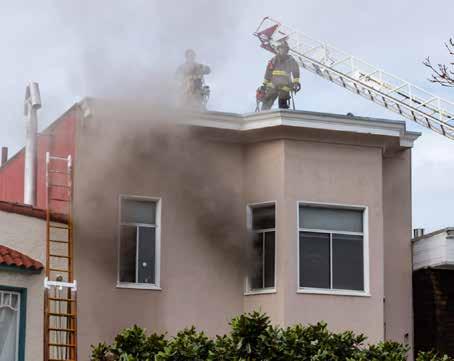

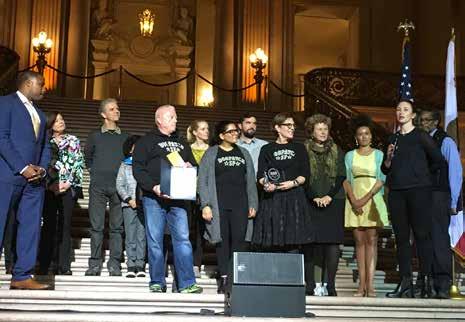


Over 81% of respondents said they have a regular primary care doctor. However, 24.2% of Hispanic/Latino participants reported that they do not have a regular primary care doctor, in comparison to 15.3% of Black/African American participants and 15.4% of Asian participants.
Data Brief 2017
HEALTH & WELL BEING (cont.)
If you needed where would you choice? (N=391)
Our health and well-being is greatly influenced by the quality and affordability of our housing, access to quality healthcare and employment opportunities, and the safety of neighborhoods for exercising and socializing among neighbors and friends.
More than 35% of respondents said they would go to San Francisco General Hospital if they needed to go to the doctor and had a choice.
Over 81% of respondents said they have a regular primary care doctor. However, 24.2% of Hispanic/Latino participants reported that they do not have a regular primary care doctor, in comparison to 15.3% of Black/African American participants and 15.4% of Asian participants.
Overall Health and Well-Being
Recognizing that health is multi-dimensional, we asked Potrero Terrace and Annex res idents about their physical, mental, social and spiritual health. This includes identifying what, if any, disabilities people have or care-giving-support they benefit from, how they rank their stress levels and the extent to which they feel supported in times of need.
More than 35% of respondents said they would go to San Francisco General Hospital if they needed to go to the doctor and had a choice.
If you needed to where would you choice? (N=391) Potrero Hill Health Center
BRIDGE Housing conducted a household survey in 2016 to inform the relocation planning process and services provision for Potrero Terrace & Annex (PTA) residents. Through a series of articles, we will share the findings. The focus this month is Health & Wellness.
Research consistently shows how people rate their health and well-being is strongly predictive of long-term health outcomes such as mortality.1 We asked residents to rate their health and well-being using a scale from “very poor” to “very good.”
Only 13% of participants said they would choose to go to Potrero Hill Health Center to see a doctor. Of those who do not use it, many said they are unaware of the Center’s
Only 13% of participants said they would choose to go to Potrero Hill Health Center to see a doctor. Of those who do not use it, many said they are unaware of the Center’s
Respondent Perceptions of Health and Well-being
to U.S. (N=449)
Stress Levels
Recognizing that health is multi-dimensional, we asked PTA residents about their physical, mental, and social health.
43% of respondents rated their health and well-being as ”very poor,” “poor,” or “fair.”
We asked residents to rate their stress levels in the last 2 weeks, using a scale of 1 to 5, with “1” being and “5” being always stressed-out:
SPIRITUAL
Research shows how people rate their health and well-being is strongly predictive of long-term health outcomes such as mortality. Residents rated their health and well-being using a scale from “very poor” to “very good”1, and when compared to adults nationwide, Potrero respondents have higher-than-average rates of “fair” or “poor” health.
When compared to adults nationwide, Potrero survey participants have higher-than-average rates of “fair” or “poor” health.2
We asked residents to rate their stress levels in the last 2 weeks, using a scale of 1 to 5, with “1” and “5” being always stressed-out:
Kaiser Foundation Health Plan, Inc. of Northern California received one of the highest possible ratings for its Medicare and private insurance plans from the National Committee for Quality Assurance (NCQA), a non-profit organization that rates health plans for consumer experience, prevention and treatment.
82% of respondents reported “good” or “very good” spiritual health.
63% of respondents rated their stress level 3 or above.
Family obligations (e.g., balancing work and family, coping recent deaths in the family, family members who have been incarcerated, and dealing with children’s behavioral issues)
Unsafe neighborhood conditions (e.g., persistent violence, specifically gun violence, drugs, and home
76% of respondents reported “good” or “very good” mental health.
Residents attributed their “stressors” to:
63% of respondents rated their stress level 3 or above.
Residents attributed their “stressors” to:
We are proud to be rated 5 out of 5 for 2017 – 2018, the only health plan in the country to receive a “5” for both its Medicare and private insurance plans.*
Yet our greatest honor is always the health and happiness of our members.
Learn more at kp.org/sanfrancisco.
62% of respondents reported “good” or “very good” physical health
Family obligations (e.g., balancing work and family, recent deaths in the family, family members who have been incarcerated, and dealing with children’s behavioral issues)
In terms of medical use, over 81% of respondents said they have a regular primary care doctor. However, 24.2% of Hispanic/Latino participants reported that they do not have a regular primary care doctor, in comparison to 15.3% of Black/African American and 15.4% of Asian participants. Residents also rated their stress using a scale of 1 to 5, with “1” being always stress-free and “5” being always stressed-out. 63% of respondents rated their stress level 3 or above due to family obligations, unsafe neighborhood conditions, poor housing conditions, financial obligations, and health problems.
Poor housing conditions (e.g., mold and broken Financial obligations (e.g., stressing over paying childcare and meeting family’s basic needs)
Unsafe neighborhood conditions (e.g., persistent violence, specifically gun violence, drugs, and home
The majority of respondents believe all three health components were interrelated and important in order to live a healthy life.
Disabilities
Poor housing conditions (e.g., mold and broken
Health problems (e.g., coping with own depression, back disabilities as well as caring for sick parents and children’s disabilities)
When asked if they feel supported in times of need, 84% of residents responded “yes, anytime” or “yes, sometimes.” We examined specific subgroups and found:
1in10 children has a disability
• Latino households felt the least supported; 1 in 4 households felt they had no or very little support.
Financial obligations (e.g., stressing over paying childcare and meeting family’s basic needs)
Half of children with a disability have asthma or other physical disabilities (e.g., heart problems and hearing impairments)
• More than 4 in 5 single, female-headed households with children felt very supported. Promoting and supporting a healthy culture and neighborhood is essential for residents to pursue healthy, satisfying and prosperous lives.
The other half have learning and speech disorders, ADD/ADHD, autism and PTSD.
When asked if they feel supported in times of need, 84% of residents responded “yes, anytime” Sixteen percent reported having no support or wishing they had more support. Most respondents said members when they are not feeling well.
3 in10 adults have a disability
When you are in need, do you have people you can talk to or who support you? (N=461)
When you are in need, do you have people you can talk to or who support you? (N=461)
A large number reported diabetes, histories of strokes, and physical impairments (e.g., hearing and vision loss, epilepsy).
In-Home Caregivers
Health problems (e.g., coping with own depression, back disabilities as well as caring for sick parents and children’s disabilities)
Yes, anytime
Yes, sometimes
Many cited high blood pressure, heart complications and kidney and liver problems.
27.3%
One quarter have mental disabilities, specifically depression, anxiety, schizophrenia and PTSD.
56.4%
We examined specific subgroups
A modest share have cancer or HIV.
Hispanic/Latino households felt in 4 households felt they had
5.2% 11.1%
Rarely, I wish I had more support No, I don’t have any help at all
More than 4 in 5 single, female-headed with children felt very supported ple “anytime,” 25% can talk “sometimes”).2
When asked if they feel supported in times of need, 84% of residents responded “yes, anytime”
1/3 are caregivers from outside agencies.
Sixteen percent reported having no support or wishing they had more support. Most respondents members when they are not feeling well.
1 in 5 households have caregivers who help them in their homes. 1
2/3 are private caretakers, the majority (89%) of whom are family members or friends.
1The 2015 National Health Interview Survey response categories were slightly different: “Poor”, “Fair”, “Good”, “Very good”, and “Excellent”.
Promoting and supporting a healthy culture and neighborhood is essential pursue healthy, satisfying and prosperous lives.
When you are in need, do you have people you can talk to or who support you? (N=461)
2
We examined specific subgroups

February 2018
Did you know that there is a daily pill to prevent HIV?
Find out about PrEP, a daily pill to prevent HIV, through an automated mobile texting conversation. You can learn about PrEP, have concerns addressed, and even find out where you can get PrEP! You can also refer friends to find out about PrEP through the texting service.
Text “CITYPREP” to 213-33 (messaging and data rates apply).
Email prephelp@sfdph.org or visit http://sfcityclinic.org/services/prep/asp for more information.
This program is sponsored by the Population Health Division of San Francisco Department of Public Health (SFDPH).
The Assessment Appeals Board resolves legal and value assessment issues between the Assessor’s office and property owners. We have two vacancies on Board 1, which oversees all downtown properties – high rise residential, office, commercial, hotels. Board 1 also oversees all properties over $50 million in assessed value throughout the City.
Assessment appeal hearings are quasi-judicial, conducted in a manner similar to a court setting, with evidence and testimony presented by the parties. The Board then evaluates the evidence and testimony, and renders its decision.
To be eligible for seat appointment, you must have a minimum of five years professional experience in California as either a: (1) public accountant; (2) real estate broker; (3) attorney; or (4) property appraiser accredited by a nationally recognized organization, or certified by either the Office of Real Estate Appraiser or the State Board of Equalization.
For more information regarding the Assessment Appeals Board call (415) 554-6778.
San Francisco International Airport has commenced the Request for Proposals (RFP) process for the following concession opportunities:
• Terminal 1 Retail Concession Leases
The Request for Proposals includes 2 Newsstand Leases, 1 Newsstand and Convenience Store Lease (2 locations), 1 Electronics Store Lease, 1 Regional Gift Store Lease, 1 Bath & Beauty Store Lease and 1 Sunglass Store Lease.
• Terminal 1 Food and Beverage Concession Leases
The Request for Proposals includes 5 Quick Serve Restaurant Leases, 2 Sit-Down Restaurant and Bar Leases, 1 Café & Market Lease and 1 Café Lease. Small, local and disadvantaged businesses are encouraged to participate.
Proposals will be received through the Airport’s RFP Web Portal from 2:00 p.m. on Wednesday, April 25, 2018 until 2:00 p.m. on Wednesday, May 2, 2018.
For more information about each concession opportunity, please visit our website at www.flysfo.com/business-at-sfo/current-opportunities or please contact:
• Terminal 1 Retail Concession Leases, call Ms. Clarissa Mamaril, Principal Property Manager, RDM at (650) 821-4500 or via e-mail at clarissa.mamaril@flysfo.com
• Terminal 1 Food and Beverage Concession Leases, call Mr. Tomasi Toki, Principal Property Manager, RDM at (650) 821-4500 or via e-mail at tomasi. toki@flysfo.com
The City and County of San Francisco encourage public outreach. Articles are translated into several languages to provide better public access. The newspaper makes every effort to translate the articles of general interest correctly. No liability is assumed by the City and County of San Francisco or the newspapers for errors and omissions.
CLEANING PROFESSIONAL since 1986. Offices, apartments, homes, and buildings. Roger Miller 415-794-4411 References given with bid.
Muir
Walking distance to the beach, with the crashing waves visible and audible from the place. Includes kitchenette and lovely patio. $175/weekdays; $200/weekends; $250/holidays. Editor@potreroview.net; 415.643.9578.
For instructions on placing a classified ad: www.potreroview.net/advertise/
FORD from page 7
our lives, whether you’re young or old. A working professional can never go wrong with pursuing and acquiring information.”
When his law enforcement career is over, Ford plans to get into the collegiate administrative arena, ideally serving as a department chair or a dean of students. In the meantime, while at Bayview he maintains communication lines with the community, seeing himself as a resource. “I want to make sure the Bayview District is a safe and vibrant place to live, work, and visit,” he said. “I’m personally committed to mitigating any upticks in violence. Public safety is at the forefront of my mind, and I want the community to view me as someone they can depend on.”
Ford holds weekly community meetings to develop relationships and address questions and concerns. He’s responsive to resident and merchant groups, letting them know of police
Walking distance to the beach, with the crashing waves visible and audible from the place. Three bedrooms, two baths, with a lovely deck. Minimum two nights: $450/weekdays; $500/weekends; $550/holidays. Editor@potreroview.net; 415.643.9578.
Gorgeous, rustic, Muir Beach space and stunning Mission Dolores home available for day rentals. Perfect for six to 10 people engaged in retreats of all kinds: writing, yoga, team-building, strategy sessions. $1,500 to $3,000 a day. Editor@ potreroview.net; 415.643.9578.
resources and how they can work to solve collective issues related to safety, property crime and homelessness.
“In this contemporary time, every community issue and concern takes a collective effort to find meaningful and long-lasting solutions, whether they are big or small,” he said. “I want to be accessible, and to communicate by maintaining open dialogue through meetings, presentations, and workshops. My main goal is to make certain people feel good about the relationships they build with Bayview officers and that every police interaction is a positive one.”
KID-FRIENDLY from page 7
necessarily think of it as a place to take children, but the staff are really accommodating by providing things like booster seats. With food they keep it simple, with items like noodles and bread; they have a lot of dishes that
For 47 years, The Potrero View has offered news about important neighborhood goings-on, including what’s happening in our schools, with local merchants, families, parks, and cherished personalities. We’ve even occasionally broken larger stories, about the closure of the Hunters Point and Potrero power plants, new parking regulations, and land use changes. We’re still here, even while the San Francisco Bay Guardian and other publications aren’t, and the San Francisco Examiner is no longer a daily.


2018 GBD Board Elections coming up.
Nominations and applications for the Green Benefit District Board of Directors open on January 24, 2017.
Information about the GBD, including activities and projects, district boundaries and election schedule and other information is on the GBD website at GreenBenefit.org
The board has 15 elected directors, a mix of residents, business owners and green space advocates. The 5 seats up for election in early 2018 are:
Property owners in Dogpatch (commercial or residential) - 2 seats
Property Owner or Tenant in Dogpatch (commercial or residential) - 1 seat
Property owner in NW Potrero Hill (commercial or residential) - 1 seat
Tenant in NW Potrero Hill (commercial or residential) - 1 seat
incorporate simple ingredients.”
For Hill residents, Chris and Amy Hansen, it’s the warmth and graciousness of the staff at Pera that keep them coming back with their preschool-aged daughter Laina. For lunch they frequent Papito, 317 Connecticut Street.
“Ever since our daughter was born we have gone to Pera on 18th Street between Connecticut and Missouri for an easy night out with great food and a very welcoming environment,” commented Chris Hansen. “Brothers Metin and Earphan Yalçin are the owners, and they have basically become extended family. Our daughter runs up to Metin for a hug whenever we are there, and sometimes even when we are just walking by. The menu has a lot
of variety, especially for small plates that can be shared family style. Our favorite dish to order is the saganaki, a delicious pan-fried halloumi cheese that’s presented on an iron skillet and set aflame tableside while the server says “Opa!” We all love the hummus, baba ganoush, creamed spinach and salads as well. Since I’m a vegetarian I can’t speak as much to the large dishes, though the Bird’s Nest, a kind of zucchini casserole with crispy topping, is delicious.”
“We don’t even refer to it as Pera anymore, but ask our daughter, “Do you want to see Metin tonight?” and the answer is always an enthusiastic “Yes!”
The View will only survive into the future with your help. Which is why we’re asking you to donate generously to the paper. Please take this opportunity to show your appreciation for community news by doing one or more of the following:
SUBSCRIBE! For $48 you’ll receive the paper every month in your mail box. How exciting!
DONATE $68, and receive a copy of The Daddy Handbook, by View publisher Steven J. Moss, a perfect gift for fathers and would-be dads!
DONATE $88, and receive a “life and death bundle,” The Daddy Handbook, a celebration of fatherhood, and Last Things: A Graphic Memoir of ALS, a gripping and deeply personal account of how Marissa Moss grappled with the death of her beloved husband.
DONATE $100, and receive all of the above plus our deep gratitude!
YES! I love the View, and would be delighted to help support it with my gift of:
$48 $68 $88 $100
Some other affordable amount $
Please send: my subscription The Daddy Handbook Last Things your love to:

Enclosed is my check. Please send, along with this form, to: The Potrero View, 1459 18th Street, Number 214, San Francisco, California 94107
I am sending my gift via PayPal to office@potreroview.net.
QUESTIONS? 415.643.9578 or editor@potreroview.net
































